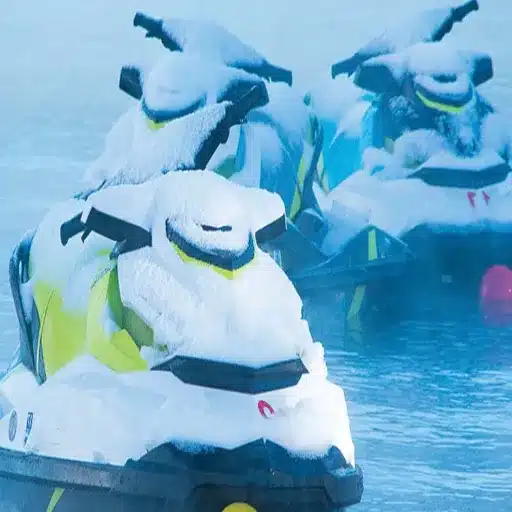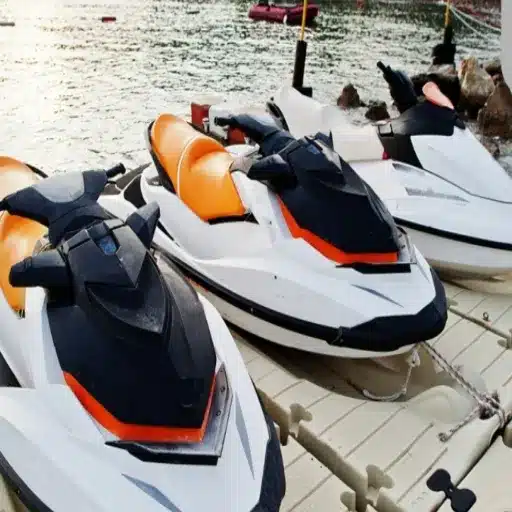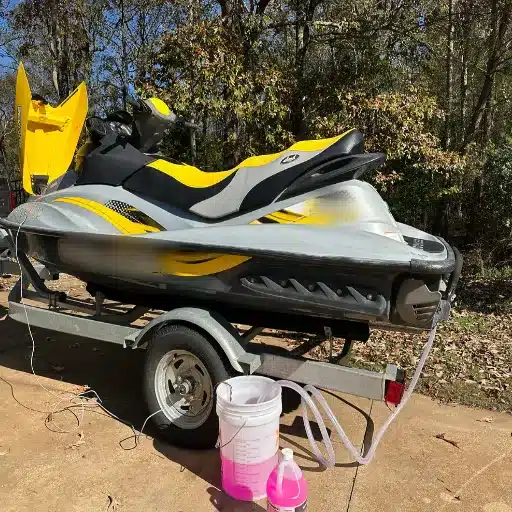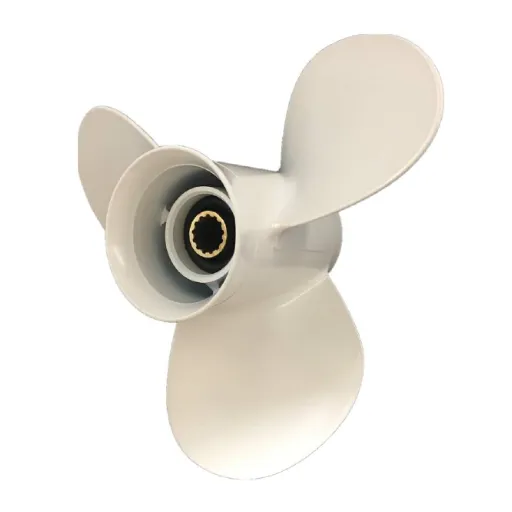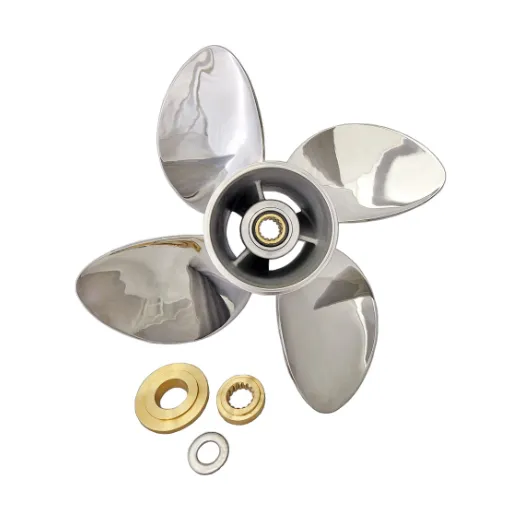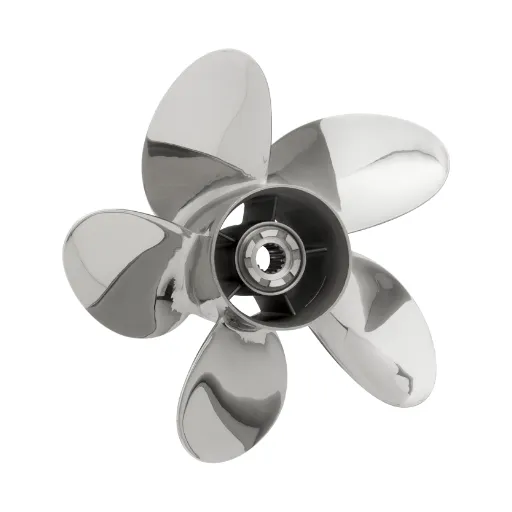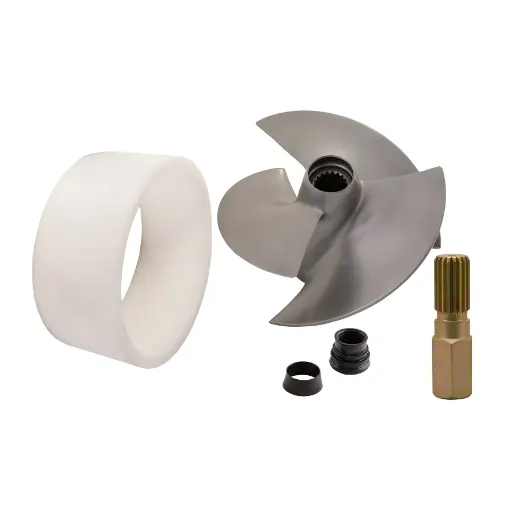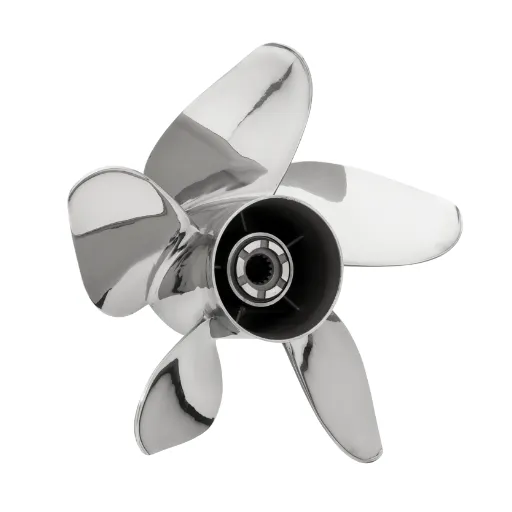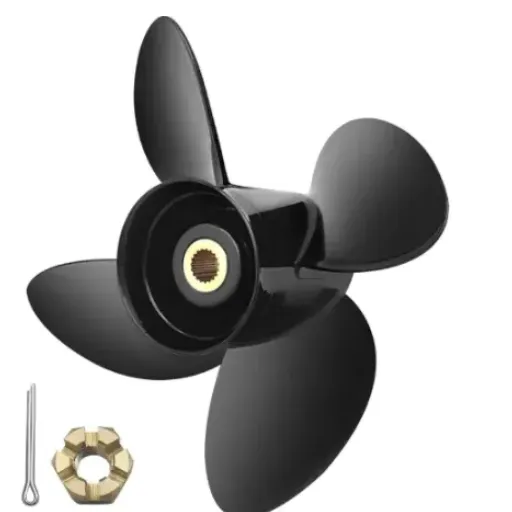Once the colder months arrive, jet ski maintenance becomes crucial to ensure it remains in good condition when summer returns. Failure to winterize your jet ski can pose a financial predicament, preventable damage, and an outright headache. This guide provides valuable tips on how to winterize your jet ski properly. From taking care of the engine to protecting the exterior, we will take you through some essential steps to keep your vehicle in perfect shape during the off-season. These tips will help you avoid the expensive pitfalls and extend the lifespan of your prized watercraft, suitable for both seasoned riders and first-time owners.
Understanding the Importance of Jet Ski Winterization
Why Winterize a Jet Ski?
Winterizing a jet ski is crucial to prevent damage and maintain its optimal performance. When temperatures drop, any water remaining in the engine, exhaust, or cooling system can freeze, expand, and cause cracks or other severe damage. Another problem is fuel degradation: old fuel clogs injectors or carburetors. Proper winterization also serves to protect against corrosion, as it is corrosion that occurs when moisture is not removed. When your jet ski is adequately prepared for storage, its lifespan is prolonged, out-of-season repair costs are lowered, and you have a guarantee that it’s ready to go in the water in the warmer months.
Common Issues from Neglecting Winterizing
⚠️ Warning: Approximately a million preventable damages, which translate into money, could have been avoided by simply winterizing one’s jet ski.
On the way to engine damage, one problem is water left in the cooling system. The water freezes and, upon freezing, expands in the cold, causing the engine components to crack. Untreated fuel, on the other hand, would decompose by itself. Every fuel system method clogs with gum or varnish, thus making any spring startup procedure very difficult and expensive.
Failure to perform this critical maintenance only hastens corrosion. Damp environments, combined with trapped droplets of water or high humidity, allow rust to develop on various internal and external metal components. Likewise, batteries can lose their charge or become damaged to the point that they need to be replaced if left unattended. All these repairs drain your pocket more than winterization itself would have cost. The time and effort you put into preparing your jet ski will definitely help avoid these complications and give the jet ski a more powerful performance when the season returns.
Advantages of Appropriate Winterization
- Prevents moisture accumulation and freezing inside the engine
- Significantly reduces likelihood of internal corrosion and expensive repairs
- Takes care of fuel system by stabilizing or emptying old fuel
- Preserves gaskets and seals for optimal operation
- Maintains higher reliability and resale value
- Cost-effective way to ensure peak efficiency every season
The Jet Ski Winterizing Process Explained
Essential Steps to Winterize a Jet Ski
-
1
Flush the Cooling System
Perform the flotation cycle jet-ski system flushing with freshwater to remove salt, sand, or debris, as temporary corrosion will be unnecessary and unwanted clogging may occur. Connecting the flush hose to the flush port, as instructed in the manual, is recommended. Run the engine for a short time to thoroughly flush all the internal components.
-
2
Treat the Fuel System
A high-grade Fuel stabilizer should be applied to the customer’s gas tank to prevent fuel degradation during storage. Fill the tank to approximately 95% complete to limit condensation and run the engine for a short period to allow the stabilizer to circulate through the fuel system. Unstabilized fuel leads to gum deposits and hard starts during the seasonal time.
-
3
Fogging the Engine
Here, fogging oil is atomized into the air intake while the engine runs, laying down a protective coating on internal parts. This coating prevents rust and corrosion of the pivotal engine parts, namely the cylinders and pistons, while the jet ski is in storage for the winter months.
-
4
Drain Water from the Engine
Maintenance of the water system should be performed after the flushing process has taken place to prevent freezing and potential damage. Holding the jet ski in an inclined position on its trailer is sufficient in most cases, or follow the manufacturer’s instructions as needed for proper drainage.
-
5
Remove and Charge Battery
The battery should be disconnected and stored in a cool, dry place to extend its life. Charge the battery with a trickle charger or a smart charger to keep it charged during the offseason and ready for use when needed.
-
6
Clean and Dry the Exterior
The jet ski needs to be thoroughly washed to ensure it is free of dirt, salt, and any other residue clinging to its hull. A marine-grade wax is then applied to protect the exterior from oxidation while in storage. The jet ski must dry well to prevent any mold or mildew growth.
-
7
Cover and Store Properly
Keep the PWC under a suitable cover that allows air to pass, protecting it from dust, weather, and pests. Store it in a secure, dry place such as a garage or storage facility. If the watercraft has to be stored outdoors, ensure that the cover is waterproof and properly fastened.
✅ Result: Following these basic guidelines ensures that the jet ski is optimally maintained for longevity, reducing the number of potential repair bills, and is ready for easy operation with the coming of the warm season.
Winterizing a PWC: Key Differences
Winterizing a Personal Watercraft (PWC) involves specific corrective measures that distinguish this procedure from typical maintenance tasks and, even more so, from winterizing other types of watercraft. The primary one is flushing the PWC engine cooling system with fresh water. Being a small, high-performance engine, this must be done, as salt, debris, and other contaminants can enter and corrode the internal parts during storage. Additionally, antifreeze is often added to the cooling system, allowing areas prone to freezing temperatures to avoid damage if any of the antifreeze-water mixture is not completely drained.
Another good point of difference would be the inspection of the battery and its protection against discharging. PWC batteries are generally smaller and require special attention. Disconnect the battery, clean the terminals, and store it in a dry, temperature-controlled location. If you plan to use a battery tender, it will keep the battery charged and prevent degradation during the winter months.
Lastly, lubrication is equally essential. When fogging oil is sprayed into the combustion chambers and onto all exposed metal parts of the engine, it prevents the development of rust and corrosion. A stable fuel oil mixture is required for 2-strokes; for 4-strokes, however, a complete oil and filter change is often recommended to eliminate contaminants. These custom changes highlight the importance of meticulous detail in winterizing a PWC, ensuring peak performance and extending its lifespan.
Tools and Supplies Needed for Winterization
The right tools and supplies make for a smooth winterization process, ensuring thorough preparation and protection for your PWC. Here’s a detailed list of essentials:
🧪 Fluids & Chemicals
- Marine-Grade Antifreeze: Non-toxic and biodegradable for environmental protection
- Fogging Oil: Coats internal engine parts to prevent rust and corrosion
- Fuel Stabilizer: Prevents fuel breakdown and varnish formation
🔧 Tools & Equipment
- Oil Extractor Pump: Essential for 4-stroke engines
- Socket Wrench Set: For removing parts during maintenance
- Spark Plug Wrench: Designed specifically for spark plug removal
- Battery Charger or Maintainer: Extends battery life during storage
🧽 Cleaning & Protection
- Microfiber Towels: For thorough cleaning
- Marine Cleaning Supplies: Specialized for watercraft
- Silicone Spray/Marine Lubricant: Keeps seals and moving parts flexible
- Protective Boat Cover: Guards against dust, moisture, and elements
💡 Pro Tip: Having all the right tools and supplies on hand will help you wind down your PWC without a hitch and keep it out of harm’s way so that it’s good and ready to hit the water again when the weather turns warmer.
Preparing Your Jet Ski for Winter Storage
Choosing the Right Place for Winter Storage
When selecting a winter storage location for jet skis, protection and accessibility should be top considerations. An indoor option is advisable. Options include garages, storage units, or storage at a marine facility. Such a PWC protects your vessel from harsh weather and temperature variations. With an indoor service, snow and ice damage, as well as prolonged exposure to freezing temperatures, which can cause cracking or mechanical issues, are prevented. Should an indoor facility not be available, though, an outdoor employer is preferred and provided with shelter, such as under cover or a high-quality museum tarp fitted for covering a watercraft. Check if the place is elevated or located away from flood-prone areas to prevent water damage from occurring. A well-secured area can, in fact, curb the risk of theft or vandalism, giving you a calm mind for the entire offseason.
| Storage Type | Advantages | Considerations |
|---|---|---|
| Indoor (Garage/Storage Unit) | Complete weather protection, temperature control, security | Higher cost, limited availability |
| Marine Facility | Professional environment, maintenance services available | Moderate cost, less accessibility |
| Outdoor Covered | Lower cost, easier access | Weather exposure, security concerns |
How to Store Your PWC Safely
Properly storing your personal watercraft will keep it in its best condition and ready to serve on occasion, so cleaning is the first step. Thoroughly wash your watercraft, both inside and outside, and remove all dirt, salt, and debris that can cause corrosion and wear over time. Flush the engine with fresh water, washing out the saltwater or other contaminants that may interfere with the internal components.
After cleaning, dry the watercraft thoroughly; otherwise, mold or mildew may develop. After that, fill up the gas tank and add a stabilizer to prevent the fuel from going bad while it’s being stored. Then, run the engine briefly to allow the stabilizer to work through the fuel system. Spray the metal parts with some anti-corrosion spray while you’re at it.
Preparing the Battery for Storage: Disconnect the battery, remove it from the vehicle, and place it in a cool, dry area. Meanwhile, keep it charged periodically. A good-quality-fitting cover against dust, moisture, and UV rays must be placed on the PWC. If possible, store the watercraft in a climate-controlled area to prevent temperature extremes. Such care will ensure the PWC remains sparkly clean and ready for your water adventure.
For Winter Storage, Care for Great Protection
It is crucial to store the PWC correctly during the winter months to prevent damage and ensure it lasts longer. Thoroughly cleaning and drying the PWC should be one of the basic requirements before storage. Begin by washing the outside to remove any salt, grime, or dust that might corrode surfaces over time. The cooling system should be exceptionally well-maintained by flushing it with fresh water to remove salt and mineral deposits. After cleaning, ensure the PWC is completely dry to prevent mold or mildew formation during storage.
Finally, it is essential to stabilize the fuel system to avoid any trouble when one is ready to ride again. Pour a good marine fuel stabilizer into the tank and start the engine, allowing it to run for a few minutes to allow the stabilizer to work its way through the system. This prevents the fuel from degrading and clogging the engine parts. Lubricate every visible metal part, and spray the engine bay with a corrosion inhibitor to help protect your PWC against rust, especially where high humidity or freezing temperatures prevail.
Lastly, always consider the storage conditions of your watercraft. Inside storage, when available, is by far the best choice, as this type of setting protects against natural hazards such as snow and ice accumulation, mangled or cracked surfaces upon arrival of sunshine, and temperature fluctuations. Otherwise, opt for a high-end cover that is water repellent by nature, matching your model. Secure it tightly so that moisture cannot enter, nor can pests or their eggs. Checking your PWC periodically during the winter months can help identify any issues early, thereby maintaining its impeccable condition and ensuring it’s ready for the following marine season.
Detailed Steps in Jet Ski Winterization
Drain and Flush the Exhaust System
⚠️ Important: Do not run the engine for longer than necessary, as it will overheat, as jet skis rely on water for cooling.
Bring the jet ski out in the proper way to drain and flush the exhaust system by parking it on a stand or trailer. Ensure the engine continues to run for 15-30 seconds while tilting the jet ski slightly toward the stern. This allows the water to drain naturally from the exhaust system. Attach a flush kit or hose adapter to the relevant port on your jet ski, located either on the back or the side. Connect the garden hose to the adapter, then turn on the water. Start the engine and continue running water through the exhaust for 2 to 3 minutes, ensuring that salts, sands, and debris are flushed out.
After the procedure, the water supply must be turned off first, followed by the engine stop. Then check the exhaust system: if it is blocked or corroded, the procedure can be repeated. Thus, a crucial yet straightforward maintenance will prevent unwanted buildup, extend the life of the jet ski engine, and ensure that your engine is ready and operational for the next time you want to head out on the water.
Battery Removal Best Practices
The procedure for removing the battery from your jet ski must be performed correctly to preserve its life and performance. Ensure the jet ski is off and disconnected from the water source. First, loosen the nuts on the negative terminal, and then loosen the nuts on the positive terminal, preventing unintended shorts. Carefully lift the battery out of its compartment, noting down its orientation to place it on a steady, non-conductive surface.
For storage, clean the battery with a baking soda and water mixture to remove corrosion from the terminals, and store it in a cool, dry place. If storing for an extended period, keep it connected to a trickle charger or maintainer to prevent it from deep discharging. Making it a habit to check the voltage levels regularly ensures that the battery stays in great shape, ready to provide power to your jet ski the moment the new season starts. This procedure will put these batteries to good use, keeping unexpected performance issues at bay when you are out on the water.
Lubricating Moving Parts to Prevent Damage
The moving parts in a jet ski must be well-lubricated to avoid wear and tear and maintain their optimum working condition over time. For instance, check the throttle cables, steering, and pivot points periodically, and apply a generous coating of marine-grade grease or lubricant to these components. This type of lubricant is specially formulated to withstand the harsh conditions of saltwater and high humidity, which would otherwise cause corrosion and failure in their operations. Scrape clean all parts of unwanted debris or old grease before lubrication, as fine, gritty particles and old grease could make the operation gritty. Consistent maintenance of these parts goes a long way in reducing damage and extending the jet ski’s life, ensuring worry-free enjoyment on the water.
Winterizing Trends and Innovations for 2025
Emerging Technologies in PWC Maintenance
A study into PWC maintenance, examining current trends and innovations, has indeed brought various exciting technologies to the forefront of maintaining these fabulous machines for optimal care. Smart monitoring systems are one of the most promising advancements. These systems enable a jet ski owner to monitor real-time performance parameters, such as engine health, battery level, or potential wear and tear, through the screen of a smartphone or onboard display. Recent models are highly equipped with sensors and IoT-based platforms that alert you to impending maintenance requirements, allowing you to act on them beforehand and thus avoid costly repair procedures.
Another technological breakthrough is the increasing use of safe cleaning and lubricating solutions. Bearing the environment in mind, manufacturers have been developing biodegradable cleaning agents and high-performance lubricants that have a minimal impact on the environment yet afford optimum results in watercraft maintenance processes. This kind of balancing act protects aquatic ecosystems while preserving the performance of the jet ski.
Lastly, various innovations, such as the introduction of 3D printing for parts manufacturing, are proving to be very promising. On-demand 3D printing enables quick production of lightweight yet strong parts, and this treatment is changing the landscape regarding repair availability and affordability. With this, jet ski owners can have a damaged part fixed faster and to a greater degree of customization. These technologies collectively create an intelligent and sustainable future for PWC maintenance while making it much more convenient to keep watercraft in their best shape.
Winterization Product From The Eco-Friendly Stance
Attach some key points on winterization of a PWC that acts in an environmentally responsible manner. One crucial step in eco-friendly winterization is ensuring that only environmentally friendly antifreeze is used. Regular antifreeze can harm aquatic life due to its chemical composition; biodegradable antifreeze must be deemed non-toxic and therefore safe for the environment. Brands such as Sierra or Splash use propylene glycol-based antifreeze, thereby effectively preventing freezing damage to internal components and maintaining a green list.
The other step I consider is choosing marine cleaners that are also environmentally responsible for the boat, among other things. Most common cleaners contain chemicals that may leach into waterways; however, there is a range of environmentally friendly alternatives that use plant-based ingredients and do a thorough job of cleaning while respecting nature. Such designated solutions with an environmentally minded approach include Star Brite’s Sea Safe line or Ecos Marine Detergents.
At the fuel end of things, proper treatment must be provided. I try to avoid fuel stabilizers with high ethanol content, which can ultimately harm the marine ecosystem. Instead, I use biodegradable marine fuel stabilizers to keep the fuel from deteriorating during storage.
Case Studies: Successful Winterization Practices
Over time, I have meticulously protected my marine hardware against winter damage by winterizing it during the off-season to maintain its longevity and optimal performance. A dry-wash practice has become popular with me: I flush freshwater through the engine’s cooling system before storing it. Salt deposits might accumulate and cause corrosion, thus damaging the internal parts. After flushing, I set some biodegradable marine antifreeze to protect the engine in freezing weather. This treatment prevents damage to the cooling system and is eco-friendly, causing minimal harm to the environment.
Another equally important part of winterizing my boat is treating the fuel system. I usually fill my fuel tank to prevent the formation of condensation that would otherwise result in water contamination. At the same time, I add a biodegradable fuel stabiliser so that the fuel can keep its qualities during the months of prolonged inactivity. Having learnt the hard way that ignoring this step can potentially lead to clogged fuel lines and poor engine performance come spring, the fuel tank must also undergo regular inspections for any detected leaks or corrosion to avoid bigger problems down the line.
Always, on my part, I clean and lubricate all moving parts, including cable steering and throttle linkages. Rust and stiff mechanics can creep in during the off-season, but a little maintenance here and there keeps things from happening. The final step is to cover the boat with a good, breathable cover to keep moisture down and protect against debris and UV rays. These precautions have worked, and through regular application, I have been able to extend the life of my equipment and avoid costly repairs.
Reference Sources
-
How to Winterize Your Jet Ski – A detailed guide on essential steps for winterizing a jet ski, including draining water and cleaning.
-
10 Steps to Winterize a PWC/Jet Ski – SkiSafe – Offers a step-by-step process for preparing your jet ski for winter storage.
-
How to Winterize a Jet Ski – Covers key actions such as draining water, lubricating, and removing the battery.
-
How to Winterize Your Sea-Doo or Other PWCs – Focuses on winterizing Sea-Doos and other personal watercraft with practical tips.
-
Essential Jet Ski Maintenance Tips for a Smooth Ride – Includes maintenance tips that are crucial for long-term care and avoiding costly repairs.
- Find more info now.
Frequently Asked Questions (FAQs)
How does one winterize a jet ski?
To properly winterize your jet ski, follow these steps systematically. Finish off by flushing out the cooling system with the weather on your side. This is to minimize the freezing of water inside the system, with the worst eventuality being that ice expands and cracks the soft aluminum lining of the mixing chamber. Next, add a fuel stabilizer to the fuel tank to ensure the fuel remains fresh. Meanwhile, spray fogging oil inside the carburetor and remove the spark plugs so that oil can reach the cylinders, thereby preventing corrosion during storage. Finish this process by covering your jet ski and placing it in a dry location.
Why is antifreeze used in a winterizing procedure?
The use of antifreeze in winterizing a jet ski is crucial to prevent damage caused by freezing temperatures. Antifreeze needs to be circulated through the engine and cooling system to protect all the components. It also helps by flushing out the water that might expand and cause cracking of some engine parts. Ensure the antifreeze used is of the RV type, which is non-toxic and safe for the watercraft. When used appropriately, antifreeze will help prevent any worries next season when getting your jet ski in the water.
How do I remove the battery from my jet ski?
Removing the battery from your jet ski is an essential step in winterizing it. First, ensure your jet ski is securely placed on a trailer or dock. Using the wrench, disconnect the negative terminal first, followed by the positive terminal. It’s also a good idea to clean the terminals before storing the battery in a cool, dry place. You could even consider using a trickle charger during its storage period to keep the battery charged and prevent it from draining.
What are the actual steps for storing a PWC?
A PWC must be stored clean and dry. Thorough washing should be done to remove dust, dirt, grime, and debris. It should be sprayed with a lubricant and protectant on its exterior and inside the storage compartments to prevent corrosion after washing. The jet ski should have at least a breathable cover to keep dust and moisture away, but allow air circulation. The PWC should have indoor storage space or a sheltered area that is preferably elevated off the ground to avoid extreme weather conditions.
How do you maintain the fuel system during the winterization process?
Maintenance of the fuel system is a crucial step during the winterization process of your jet ski. A fuel stabilizer should be placed in the fuel tank. The aim is to prevent fuel degradation and deposit formation. Run the engine for intervals of about 30 seconds after adding the stabilizer, allowing it to circulate throughout the fuel system to help keep the carburetor and fuel lines clean. United by condensation rash, they could rise further due to moisture, which might cause corrosion if the fuel tank is empty. Keep the tank half full for safety!
How do I best winterize the exhaust system?
The exhaust system needs to be winterized as a precautionary measure against freezing and potential damage. Flush the exhaust system using water from your garden hose to flush out or drain any leftover water. Then, prohibit moisture and debris from entering the exhaust outlet during storage by covering it. You might even want to fog the exhaust system with oil as an extra layer of corrosion protection. If these steps are followed, the jet ski exhaust system is likely to remain in good condition during winter.




